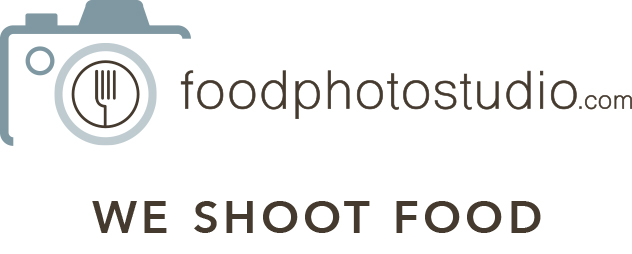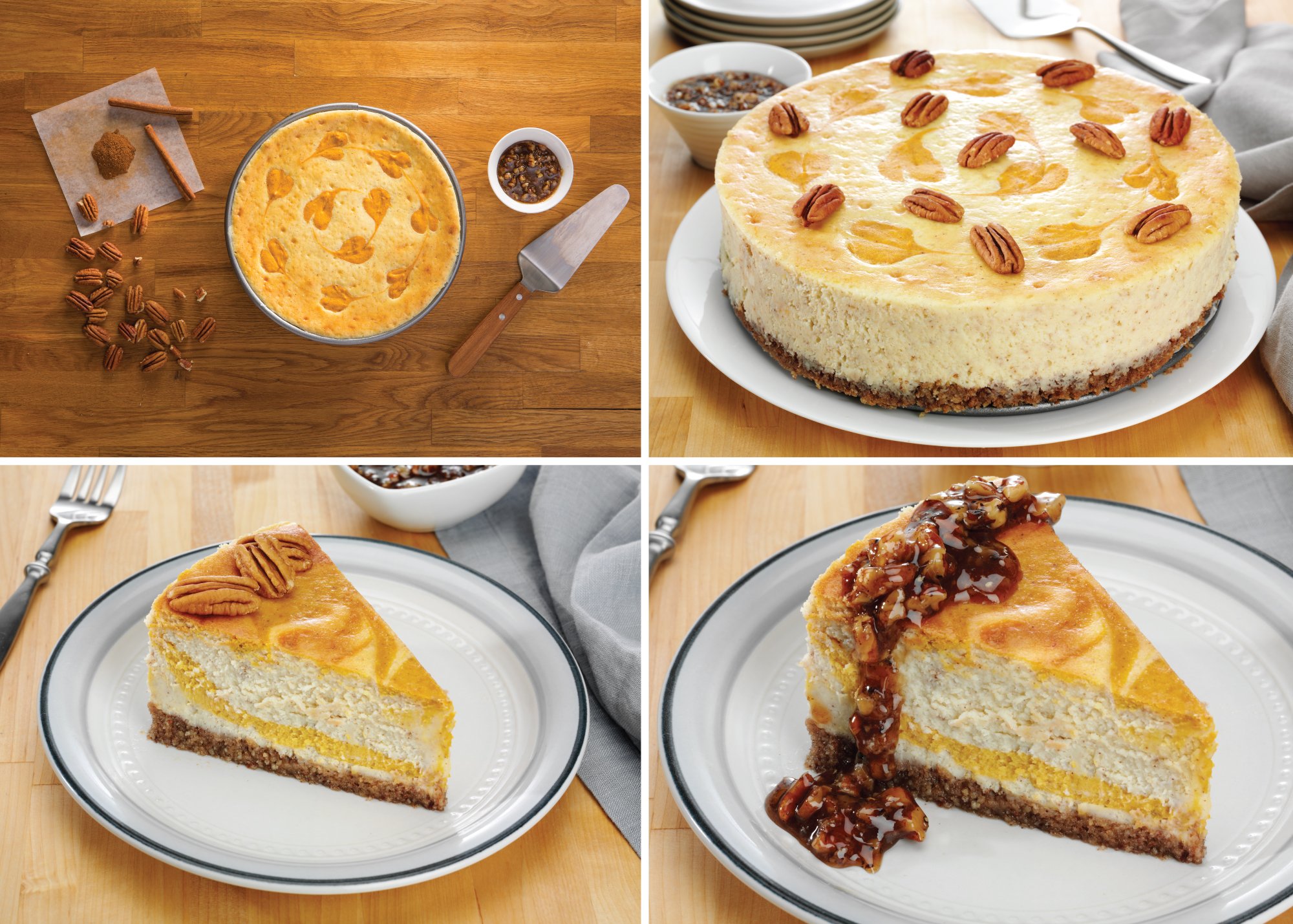You want to hire a food photographer to capture your product in its best light. You’ve even found someone you love — their portfolio is impressive, and their Instagram feed indicates they’re fun to work with, too. Is it time to book a shoot?
Not quite yet. Hiring a photographer is exciting, and it’s tempting to dive right in. But we know from over 30 years of experience that you’ll get better results if you iron out a few simple details first.
Ask yourself these 8 questions to determine if you’re ready to start planning a photo shoot of your food product. Read on, and you’ll be supervising your shoot in no time!
Question #1: Where will my photos ultimately be used?
Food photographers can shoot images for all sorts of uses: product packaging, store displays, advertisements, social media posts, and websites (think banners and product images).
Each type of photo has different considerations. That’s why it’s important to know the end uses for an image before you take it. For your photography team, it affects:
Orientation choices. Landscape, portrait, square, or extended horizontal (for website banners) are just a few options. Your photographer can shoot an image in multiple formats to give you more flexibility.
Food styling. “Truth in advertising” laws require that images on product packaging depict the actual product being sold, not a replacement that photographs better. It must also show the product in the quantity that’s included in the package.
Prop choices. Your food product isn’t the only thing in the shot. Prop stylists use plates, cutting boards, and other embellishments to make your product look optimally delicious. Your stylist may choose different items if the plan is to take multiple types of shots in one day. For example, say your photographer will be taking a close-up image, then pulling back for an overhead shot. The stylist may choose a larger cutting board that can accommodate both shots. Also, they may want extra items on hand to fill out the larger scene.
While the wonders of Photoshop do allow you to adjust and manipulate images in post-production, you’ll get far better results with smart planning. A very simple adjustment in the studio can give you more (and higher-quality) options for your future needs.
Question #2: What are the measurements and formatting requirements for each possible usage?
Tracking down exact measurements will give you and your photographer even more ability to tailor the final product to your needs. For example, your photographer can enter the crops on their camera’s software, which enables them to shoot precisely to fit. If you have a rough layout of the final usage, your photographer can even lay it in the camera software to perfect the image further. Images can be expertly nestled around specific copy or CTAs (calls to action).
Question #3: Do I have a brand style guide or brand book?
Brand style guides contain information about the look and feel of your brand. They usually cover which colors, fonts, and images are appropriate to tell your story.
You’ll definitely need a brand style guide if you hire a graphic designer or ad agency. But they are essential for photographers too!
Here’s how we use them:
Colors. We need your brand colors to choose complementary props and backgrounds. Some clients even send PMS colors so we can match the shades exactly.
Photography style. There are many different styles of photography. The same subject could be shot in multiple ways. Imagine a stark white image versus a dark and moody one. Photographers can play with elements such as contrast and shadow to create photos that give completely different impressions.
Human elements. Some clients like to see the human element in their food photography, and others do not. Think about whether you’d like hands visible in your images.
Props. Prop stylists need to know whether you consider certain materials on-brand or not. Examples are weathered woods, metals, colored plates, and white plates.
Sure, your photographer could just review your current marketing materials and make an educated guess about your brand guidelines. But that carries risks. Those materials may reflect past choices — not where you want to go now. And without the guidance of a brand book, everyone may spend unnecessary time making changes on shoot day.
Fear not: If you don’t have a brand style guide right now, your photographer can help you establish one.
Question #4: What types of shots will I need?
Your main decision here is product versus lifestyle shots. Product shots are fairly straightforward. With a product shot, the focus is on the food product item itself.
Lifestyle shots depict the product in use, or in a setting where it will likely be used. A typical lifestyle setting in food photography is in a kitchen. Lifestyle images can feature a model or not. Even if there is no person present, it gives the feel that a person influenced the setting.
As you might guess, planning a lifestyle shot with models is more complex than one without. When people are involved (whether they are professional models or amateurs), there are important considerations around budget, scheduling, and diversity.
If you aren’t sure which type of shot is best for your project, your photographer can help you figure it out.
Question #5: Have I done market research for my product?
Market research helps you determine how to advertise your product for more sales. But it helps your photographer as well. Knowing details about your target audience and their preferences affects several elements of a photo shoot.
Two examples are the choice of props and the design of any lifestyle sets. Depending on your target demographic, your photographer and stylist will choose the props and setting that will most appeal to their tastes.
Another type of research that’s useful to share is product feedback you’ve received from customers, both positive and negative. For instance, if customers are finding your product difficult to use, the photographer can suggest extra shots of the process, to help users understand better. Or if your product performs better in some situations than others, let your photographer know so they can avoid any of those potential problems on set.
Question #6: Am I able to attend the photo shoot, or approve proofs remotely?
This is non-negotiable. Your photographer wants to capture exactly what you want during the shoot. Getting instant feedback from you (or a trusted representative) is essential to achieving that goal. You’ll likely be asked to approve specific shots or give feedback on the shots in general.
Sometimes things don’t go as planned on shoot day. In those situations, your photographer will want to collaborate with you on creative solutions to challenges that arise. If you are on set or easily accessible, they can adjust quickly and move on with little disruption to the overall schedule.
There’s also the possibility that something positive and unexpected will happen! Perhaps a new idea arises based on what the photographer creates in real time. In those cases, your input is important to determine whether this new and exciting idea is something to run with. Often, these spontaneous flashes of inspiration become the highlight of the shoot day, and they couldn’t be realized without your go-ahead.
Question #7: Is there a recipe I’d like the photographer to use? Or will I need recipe ideation?
If you are planning a photo shoot for a food product, you may want some images of the item fully prepared or fully assembled. If you already have a recipe in mind for this, great. If not, you’ll need recipe ideation. (Ideation simply means the development of ideas for something.)
Recipe ideation can take anywhere from weeks to months. The timeline for developing a recipe varies depending on your internal approval process and the complexity of your photo shoot. Your photographer can refer you to recipe developers who can help with ideation.
There’s another meaning of the word “recipe” that you should know in the photography context. Say your product is a vegetable soup, and you want to photograph the ingredients included in it. To do this, your photographer will need a “recipe,” or a precise breakdown of the ingredients and their amounts in your product. This is so that the photograph will accurately represent your product — another instance of “truth in advertising” laws coming into play.
Question #8: Have I asked the other members of my team about their photography needs?
Who else in your organization might use the photographs you are planning to take? Make a list of those people, and bring them into discussions as early as possible. That way, they can share any pertinent technical specifications they have, as well as request other shots that will make their jobs easier. By coordinating everyone’s needs, you can make the most of your shoot day.
Common examples of folks to include in your planning discussions are:
Web developers
Packaging designers
Graphic designers
Social media strategists or managers
Your agency, if you use one
Before the photo shoot, your photographer may arrange a pre-production call with all your stakeholders. The purpose of a pre-production call is to ensure everyone has a say regarding the proposed shot list, the intended style of the photography, and the approval process. Ironing out these details early on saves time and prevents frustrations later.
When agencies are involved, it’s even more important for everyone to agree on the plan. Often, complex shoots with lots of people involved will have several rounds of production calls.
The Takeaway: A Little Prep Work Gets Your Food Photography Project Started Right
Ultimately, you and your photographer share the same goal: making your shoot as successful as it can be. Answering these key questions gives us the information we need from the start to make that happen.











